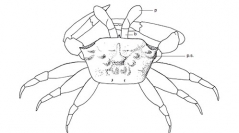

 Geodiversitas
28 (4) - Pages 591-633
Geodiversitas
28 (4) - Pages 591-633Based on numerous and remarkably preserved specimens from the Upper Cretaceous, Cenomanian, at Lamnay and Le Mans (Sarthe), France, the fossil crab Lithophylax trigeri A. Milne-Edwards & Brocchi, 1879 is redescribed. Characters which were thought not to be easily fossilized (rostrum, vulvae, female and male abdomen, male pleopods, thoracic sternal sutures, stridulating apparatus and the reduced fifth pereopod) are present. It was possible by careful clearing of the fossil crab from the matrix to expose most of the parts, so that the structures could be studied almost as completely as in a recent species. Lithophylax trigeri is one of the most complete brachyuran crabs so far discovered from the Cenomanian, from the Cretaceous in general, and even more recently. The monotypic family Lithophylacidae Van Straelen, 1936 is redefined, and its relationships with the fossil and extant brachyuran families known from the Cretaceous, in particular the Carcineretidae Beurlen, 1930, Necrocarcinidae Förster, 1968, Hexapodidae Miers, 1886, Retroplumidae Gill, 1894, Palicidae Bouvier, 1897, and the Goneplacidae MacLeay, 1838, are discussed.
Crustacea, Brachyura, Lithophylacidae, Lithophylax, stridulating apparatus, Cretaceous, Cenomanian, Maine (France), taphonomy